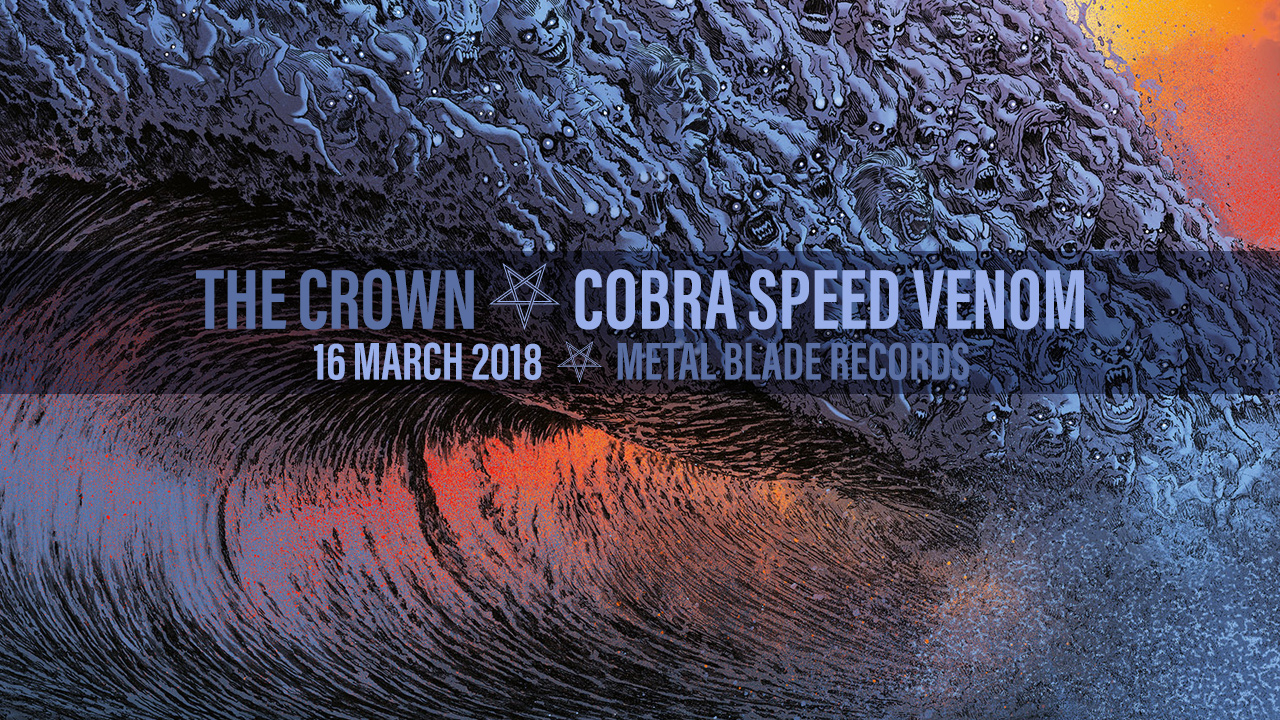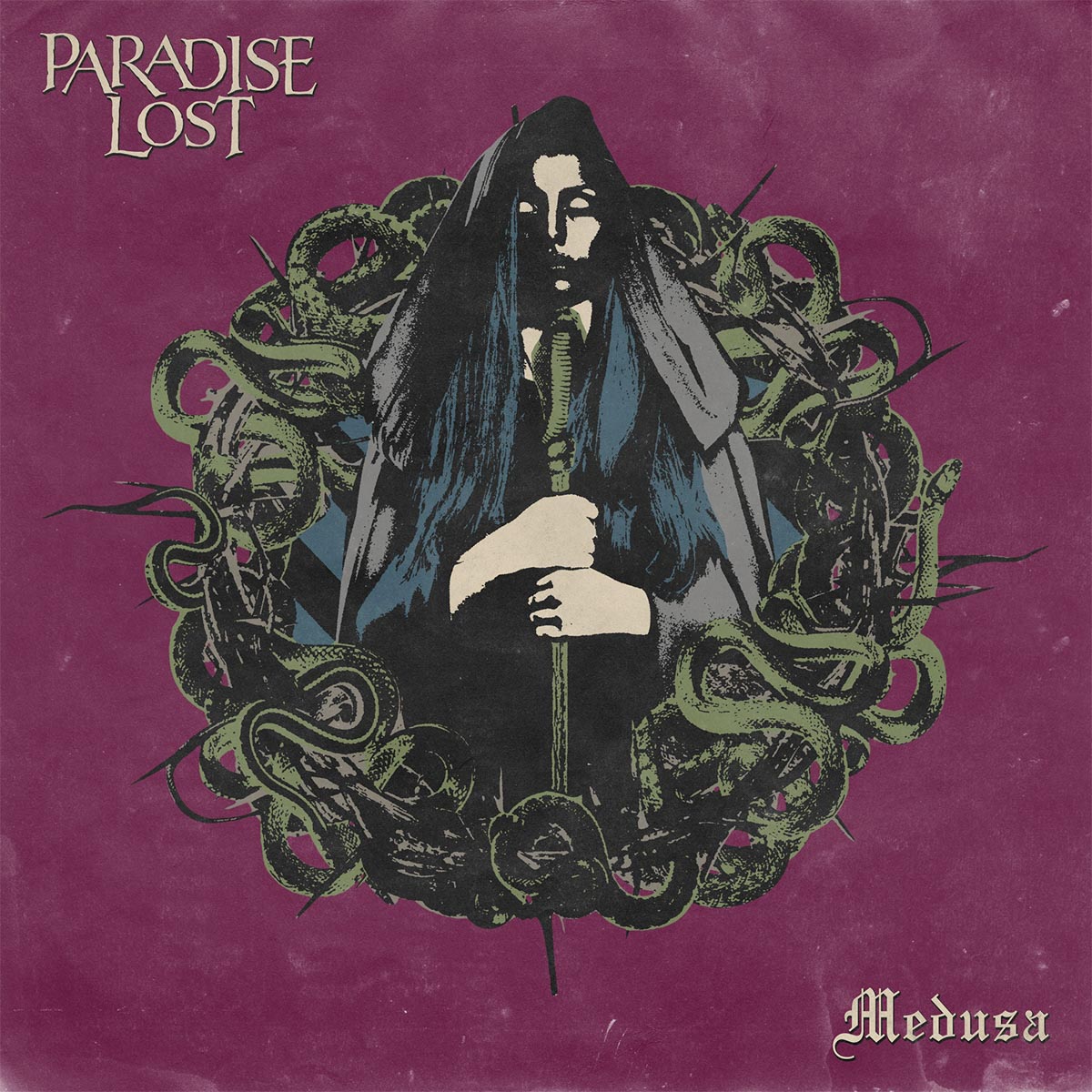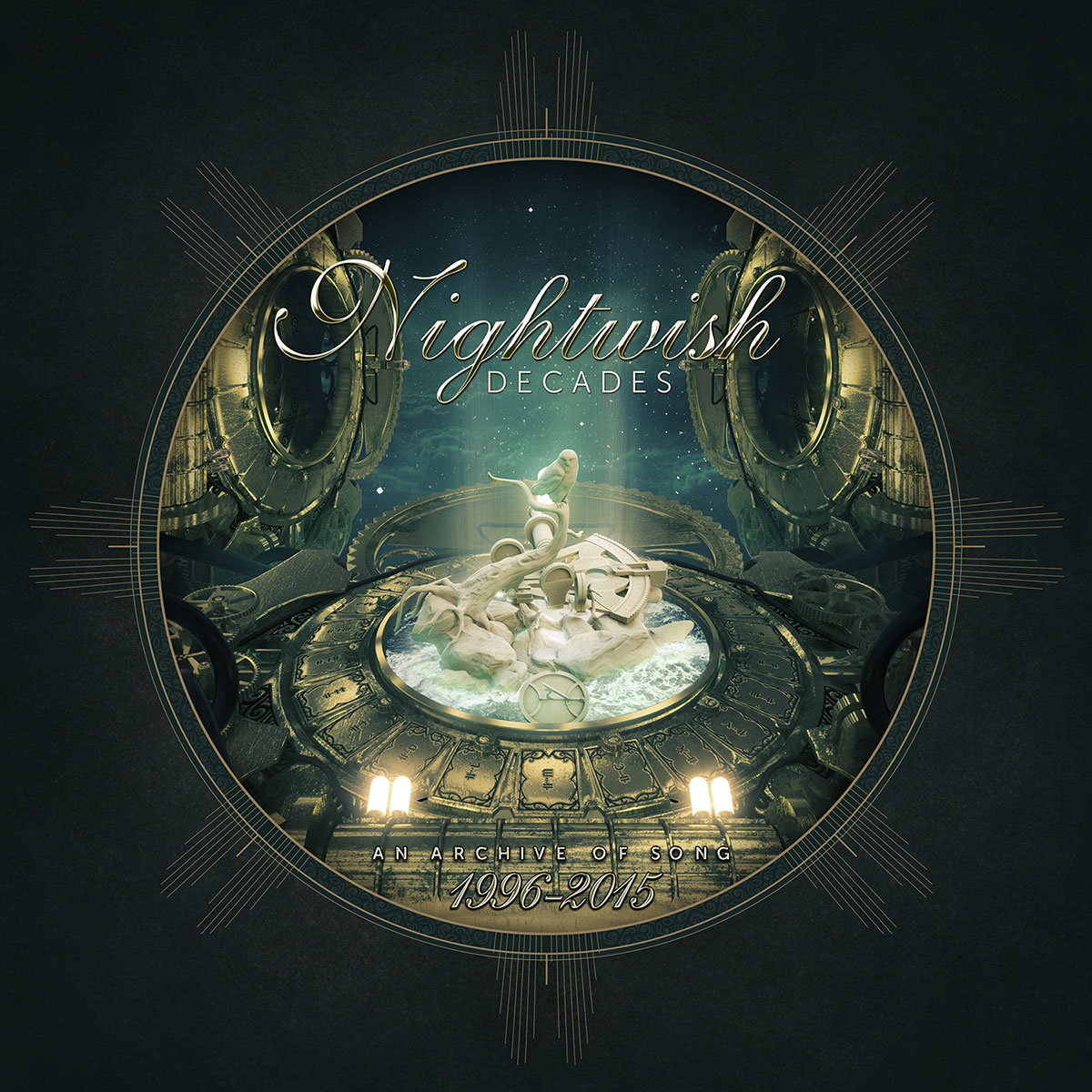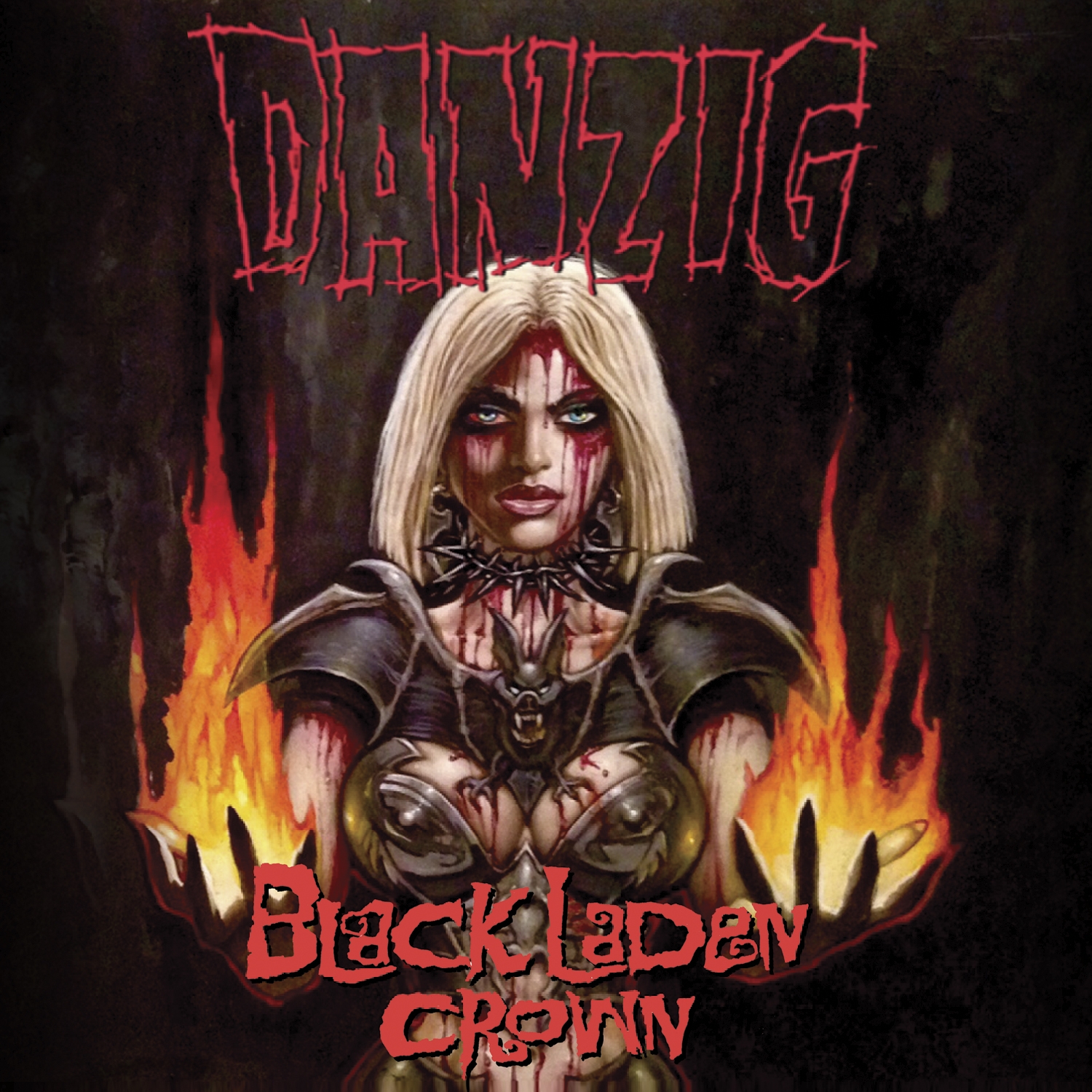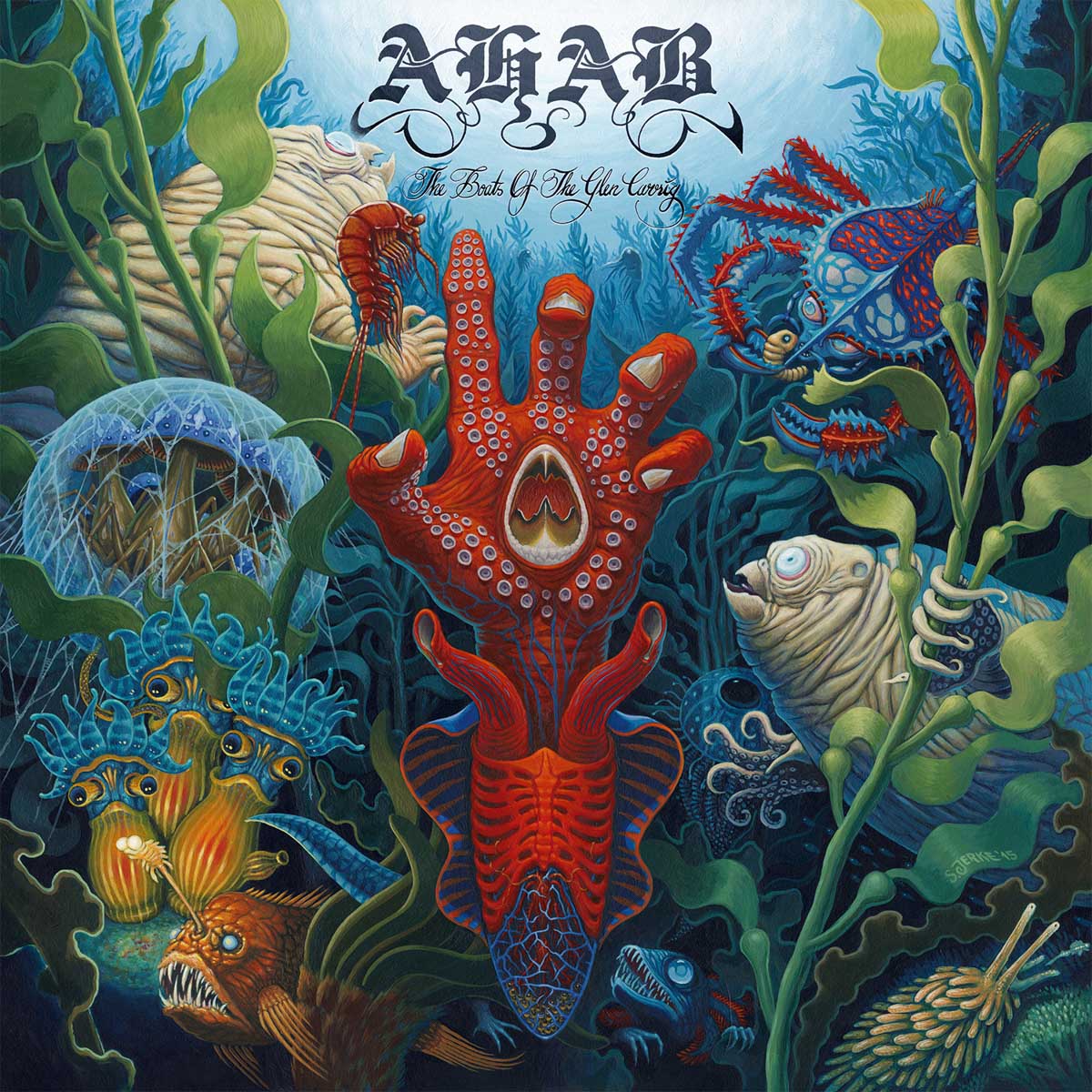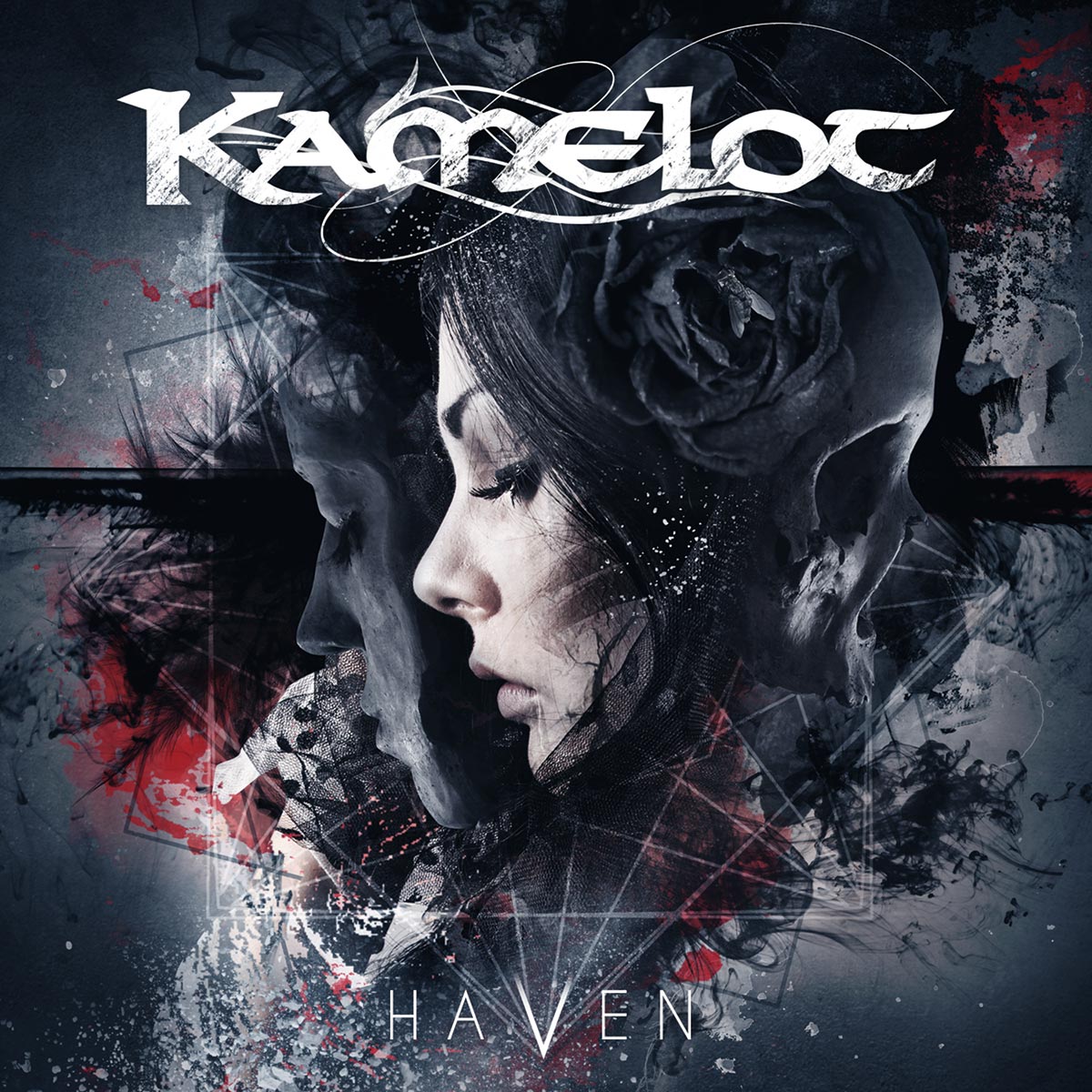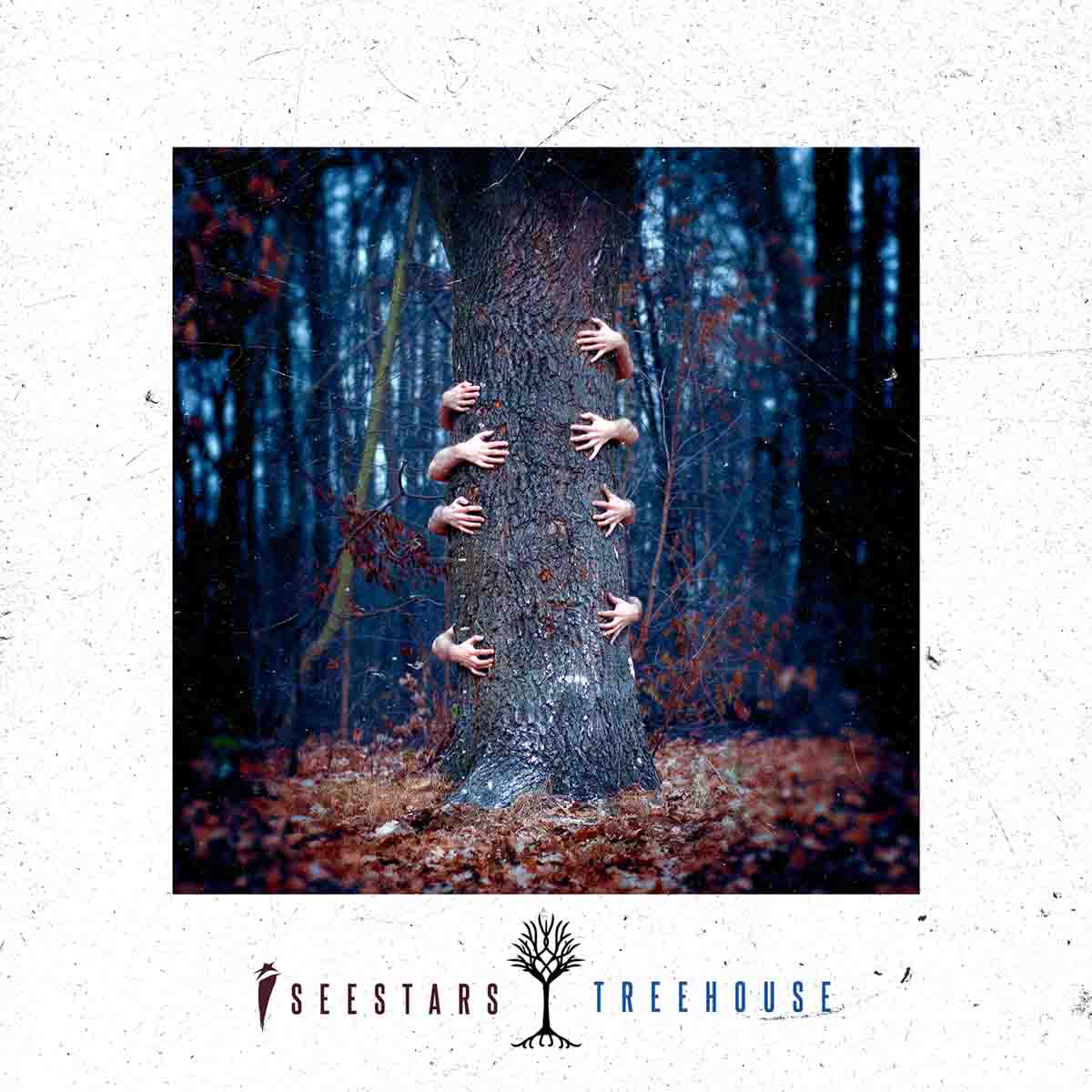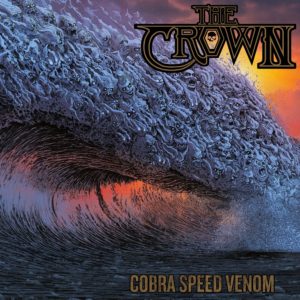 While some bands come and go with the trends, others, often seemingly disparate, maintain a dialogue started long before their inception. Such is the case with the lineage begun with Johnny Cash, the main in black in the 1950s, continued by Glenn Danzig and Lemmy Kilmister in the 1970s, furthered by Cronos in the early 1980s, onward to Max Cavalera in the mid-late 1980s, and on to The Crown in the 1990s. Their legacy is one steeped in a tradition of bucking at authority, spewing rebellion to society, and blazing a path for others of like mind to wander in self-discovery. Formed in 1990 in Trollhättan Sweden, The Crown spent the early and mid-1990s crafting their own version of Swedish Death Metal, one which owed more to its roots than its overpopulated peers. In 1999, they released the genre-pushing coming of age album, Hell is Here on Metal Blade records. Considered impossible by some, truly so for most bands, they followed Hell Is Here a year later opening the millennium with their defining moment, their magnum opus Deathrace King. While lineup changes and inconsistencies plagued the band despite its top-notch Metal afterward, The Crown is back, truly back.
While some bands come and go with the trends, others, often seemingly disparate, maintain a dialogue started long before their inception. Such is the case with the lineage begun with Johnny Cash, the main in black in the 1950s, continued by Glenn Danzig and Lemmy Kilmister in the 1970s, furthered by Cronos in the early 1980s, onward to Max Cavalera in the mid-late 1980s, and on to The Crown in the 1990s. Their legacy is one steeped in a tradition of bucking at authority, spewing rebellion to society, and blazing a path for others of like mind to wander in self-discovery. Formed in 1990 in Trollhättan Sweden, The Crown spent the early and mid-1990s crafting their own version of Swedish Death Metal, one which owed more to its roots than its overpopulated peers. In 1999, they released the genre-pushing coming of age album, Hell is Here on Metal Blade records. Considered impossible by some, truly so for most bands, they followed Hell Is Here a year later opening the millennium with their defining moment, their magnum opus Deathrace King. While lineup changes and inconsistencies plagued the band despite its top-notch Metal afterward, The Crown is back, truly back.
Hearkening back to first hearing Hell is Here, the first track, “Destroyed by Madness,” opens with blistering speed, blast-beats, tremolo picking, and the Motorhead-like raunchy chords and fills which incorporate their trademark sound. “In the Name of Death,” the third track begins with syncopated riffs locked in with the drums which launch into a fast display of the Death ‘N Roll they are so famous for, a sound blending the aggression of Death Metal with the more traditional traits of Motorhead, Venom, and even Punk at times. It’s riff-fest 2018 as the band switches between Death Metal, Death ‘N Roll, and Thrash styles throughout while blazing solos add just as much to the melody as to the chaos. In a dramatic ending, they return with one guitar and the bass playing the alternate-picked, syncopated opening riff while the other guitar plays straight down-picked eighth notes over top proving that sometimes the little touches of variation truly do matter most. Perhaps the standout track is the fifth, the title track, which opens with dramatic keyboards alongside the guitars and bass which soon give way to light speed pentatonic pull-offs by the guitar interspersed by distorted bass lines and the signature blast beats The Crown are so famous for. In this track, they prove that they are still the MC-5 of Death Metal, the true inheritors of 1980s Slayer, Venom, and Possessed and 1990s Entombed. Halfway through the song, the placement of more traditional Metal riffs allows the song to shine brighter contrasted with the blitzkrieg onslaught of the rest of the song. One can literally envision skulls crushed in the pit as they execute a most brutal palm-muted breakdown in the last twenty-five seconds of the song. “World War Machine”, the sixth track, features a remarkably brutal lightning-speed breakdown locked in with the double bass at the 3:05 mark. The guitars let the song breathe during the signature distorted bass of Magnus Olsfelt playing up front while the vocals shout, “Bow down and hail your king!” The tenth and last proper track (there are also three bonus tracks in the release), “The Sign of the Scythe,” is reminiscent of “Dead Man’s Song” from Deathrace King. It’s a 7:02 long affair, an epic song which features a copious amount of melody. Toward the middle of the song, the guitar solo in astounding effect, conjures an eagle soaring over the earth, flowing up and over clouds, and swooping down to the ground to take hold of its prey and rise again.
Instrumentally, this is an incredibly strong release. Johan Lindstrand’s vocals sound as if new life has been breathed into them, and his past intensity is finally matched. One of the main strengths of the band is definitely the bass playing of Magnus Olsfelt who injects his signature distortion-soaked sound proving the bass need not be a background instrument. Along with Magnus, rhythm guitarist Marko Tervonen has been with the band from the very beginning. With his riffs, he has composed the soundtrack to watching a nuclear holocaust in slow motion. One can taste the radiation while listening. Robin Sörqvist performs leads with just the right amount of melody injected into the cacophony giving the songs a quality that remains with the listener long afterward. One of the most stellar assets of the band was always Janne Saarenpää who played drums with the band until 2014. This was especially true after seeing him replicate the firestorm that comprised his playing live in 2000 as his war drums stole the show from the other three bands on the bill: Krisiun, Nile, and Cannibal Corpse, all of whom had incredible drummers. Now, Henrik Axelsson is behind the helm, and while he must have had a Paul Bostaph moment being put into such a role, he is more than capable though with a more reigned-in, controlled style on this second album he has appeared on.
In composing the soundtrack to Armageddon with their brand of Death Metal ritual suicide, The Crown’s strength is blending the sometimes melodic, other times atonal characteristics of traditional Death Metal with an execution that owes its identity just as much to Venom and Motorhead. Entombed may get the credit for starting the Death ‘N Roll subgenre, but The Crown truly perfected it. After listening to Cobra Speed Venom, it is clear that the twists and turns of the last eighteen years that fans may not have been thrilled with have been erased. This album sounds like the logical follow-up to Deathrace King, the best album in Metal of the year 2000. The Crown‘s music is blatantly unapologetic and blasphemous, reveling in darkness, the perfect selection to play in the dorm to let preps know to stay away. One is undoubtedly filled with varied images of war, destruction, and bloodshed while listening to The Crown, and on this release, able to picture blood-drenched flags of hatred flying high over a vast wasteland of slowly decaying enemies. Hell is here!

